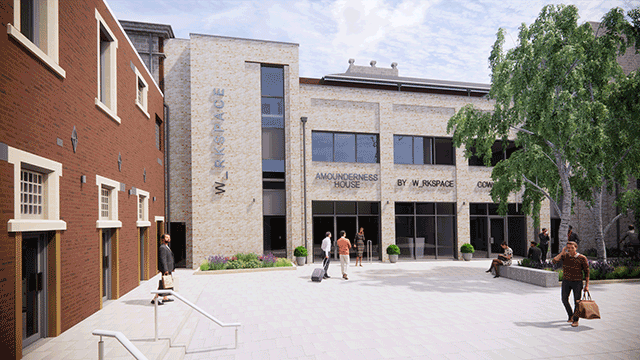EG’s head of workplace and offices research Graham Shone has taken a deep dive into how the coronavirus pandemic will change national working patterns and the subsequent knock-on effect of those changes on not just the office market but the wider real estate ecosystem. Drawing on data from EG’s Radius Data Exchange and other sources, many of the discussion points raised reflect changes that are likely and expected to take place as a result of this uniquely accelerative event. Last week, EG took a look at the role of offices in a post-Covid world; this week, we ask if an increase in working from home could save the high street.
When considering the entirety of the real estate ecosystem, something which requires discussion is the extent to which office workers enable adjacent leisure and retail spaces to maintain and increase their profitability.
Some research into the symbiotic relationship between these elements has been done already. Centre for Cities’ 2019 report, City Centres: Past Present and Future, outlines how local service businesses such as retailers, hairdressers and restaurants have an acute reliance on the ability of the wider urban economy to attract and retain highly-skilled “exporter” businesses (ie, those which serve the needs of a client base beyond the boundaries of the local area – and that are primarily situated in office buildings).
Those cities with a greater volume of office-based knowledge/exporter businesses can reasonably be expected to have a relatively healthy high street.
Savills’ What Workers Want report from 2019 indicated that nearby retail and leisure amenities play a big role in underpinning the appeal of city-centre working for those employees surveyed, with 58% of the respondents indicating that they would most like to spend the majority of their working time in a city or town centre.
The report states that “the provision of local amenities, good access to public transport networks and the opportunity to cluster with similar businesses have driven this demand”.
The reverse of this is also true. Areas with a relatively high concentration of office workers have a distinct appeal to retailers, restaurants, bars and other leisure outlets which would benefit from a captive customer base of white collar workers who are, by necessity, close to their businesses for around 40 hours each week.
But what happens when a significant proportion of those workers choose to alter where they are for those 40 hours? Where are the areas which might notably gain and lose from that scenario?
The table below shows median retail availability rates by square footage in areas with a high proportion of employment being conducted in office premises (line 1); compared to those with the lowest share of the workforce being housed in offices (line 10).*
This data shows that nowhere has been immune from the struggles of the retail sector over the last few years. Even those local authorities with a relatively high proportion of white-collar employment, strong deprivation index scores, and upper-bound levels of disposable income still suffer from swathes of empty retail and leisure space.
However, those local authorities with the highest proportion of office-based employment are the ones with the lowest median availability rate for retail and leisure (5.4%) and there is a broad trend moving down the list (with some anomalies) which indicates that office employees are more likely to help maintain retail occupation.
Some of that may come by virtue of bigger national chains which, when undergoing wholesale physical restructures, elect to retain their large stores in more areas with a significant concentration of office workers, and the associated higher disposable income which comes with them.
Retail availability rates in local authorities with a high concentration of office-based workers are somewhat insulated by the daytime patronage of those employees. Any significant shift in working patterns may well mean a downturn in retail and leisure fortunes across those types of council regions.
This may be “displaced” demand and we will begin to see more office workers patronising businesses closer to their homes as opposed to underneath their office buildings during the day. Traditional high streets and shopping centres in commuter areas or other less densely populated urban settlements may see an organic boost from an increased employee presence throughout a revised “working week”.
This next table shows the same data as the table above, but the deciles are altered to show the local authority areas wherein office based workers live, as opposed to where they work.
An immediate impression from this dataset is that the trend on deprivation and median disposable income is much stronger than that seen in the first table, which indicates that council areas housing a lot of office workers are already relatively prosperous areas.
If the pattern shifts from five days a week commuting back and forth from an office location elsewhere and instead they spend an increased amount of time (and money) locally, then things might start to move in a favourable way for those top deciles for residents with “office-based” jobs and in the opposite direction for those authorities that would traditionally house a great many office workers who have commuted in from other areas.
The table below shows the areas that potentially stand to gain and lose from a retail perspective if office workers on the whole are going to permanently split their working time between home and the “real” office.
This entire analysis feeds broadly into what can be defined as localism within retail – ie, prioritising neighbourhood businesses for shopping requirements in whatever form the “neighbourhood” might take – and, of course, relates to where people live rather than where they work.
The experience the country has had in terms of needing to rely more acutely on local retailers for all types of goods during the pandemic should also not be underestimated. This significant lived experience has added to the weight of importance attached to supporting local businesses. Growing public awareness over fashion and food “miles” will substantiate the popularity of localism either consciously or subconsciously potentially causing further issues for those areas which rely on the incoming office commuters to underpin their consumer performance.
As such, certain towns and cities may find themselves increasingly having to rely on increased tourism or enhanced growth in a centralised residential population to better insulate their retail and leisure businesses from any negative effects born out of flexible working.
Read parts one and three of EG’s Shifting Working Patterns report:
- Shifting working patterns: What is the reality for offices?
- Shifting working patterns: The expanding commuter belt
To give feedback and comment, e-mail graham.shone@egi.co.uk or tweet @estatesgazette using #shiftingworkingpatterns
* NB. Availability rates should not be mistaken for “vacancy rates”. Units may stand empty without any desire to actively push the space onto the market, and therefore filter through to Radius – so the figures herein are based only on the square footage within those spaces which are currently the subject of active marketing campaigns. The calculation of availability rate is done by totalling the amount of space currently being actively marketed divided by the total stock of retail and leisure space within the local authority area.
Source for all tables: Radius Data Exchange & EG Analysis of: Valuation Office Agency Hereditament data by postcode, NOMIS Labour Market Surveys, ONS Deprivation Index 2019, ONS Disposable Income per head 2018, ONS Gross Value Added (Local Authority) 2018.











